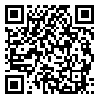BibTeX | RIS | EndNote | Medlars | ProCite | Reference Manager | RefWorks
Send citation to:
URL: http://ptj.uswr.ac.ir/article-1-243-en.html
2- Department of Basic Sciences, School of Rehabilitation Sciences, Iran University of Medical Sciences, Tehran, Iran.
Purpose: Proprioception is a part of the somatosensory system responsible for sending information to the central nervous system to monitor the status of various body parts relative to each another. One of the main causes of impaired proprioception is fatigue. In the following study, the effects of fatigue on quadriceps muscle and hence on knee proprioception in healthy subjects was studied.
Methods: This is a pretest-posttest study. By available sampling, 34 healthy young subjects with a mean (SD) age of 22.15 (1.97) years, a normal knee motion range and muscle strength, with no skeletal muscle nerve damage, volunteered for this study. The subjects tested the target angle reconstruction (45° flexion) of their knee joints while contracting the quadriceps muscles. We used a digital inclinometer to assess proprioception before and after fatigue. Then, by using the paired t-test, the rate of constant error and absolute error were compared. For the statistical analyses, SPSS (version 16) was used.
Results: quadriceps muscle fatigue causes a significant increase in the error rate of the knee joint reconstruction angle at 45° (absolute error and constant error) (P<0.05).
Conclusion: Quadriceps muscle fatigue decreases accuracy and increases absolute error and constant reconstruction angle of the knee joint in healthy individual.
Received: 2015/01/30 | Accepted: 2015/04/28 | Published: 2015/07/1
| Rights and permissions | |
 |
This work is licensed under a Creative Commons Attribution-NonCommercial 4.0 International License. |





